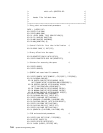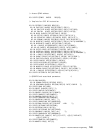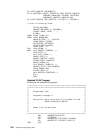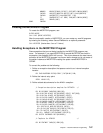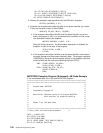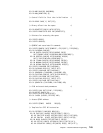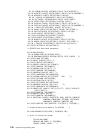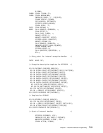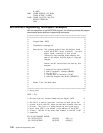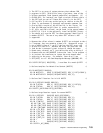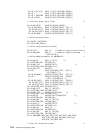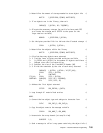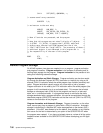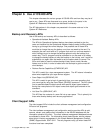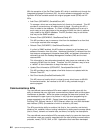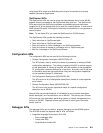
B E141;
SAME: CPYBWP USRSPC@, EXC_OBJ@;
CPYBLA ACTION, X'1';
E141: CPYBWP INV_PTR2, INV_PTR;
RTNEXCP RTNTMPLT@;
PEND;
MI Common Programming Techniques—Examples
With the completion of the MICRTPG2 program, the following example MI program
demonstrates some additional programming techniques:
/ᑍᑍᑍᑍᑍᑍᑍᑍᑍᑍᑍᑍᑍᑍᑍᑍᑍᑍᑍᑍᑍᑍᑍᑍᑍᑍᑍᑍᑍᑍᑍᑍᑍᑍᑍᑍᑍᑍᑍᑍᑍᑍᑍᑍᑍᑍᑍᑍᑍᑍᑍᑍᑍᑍᑍᑍᑍᑍᑍᑍᑍᑍᑍᑍᑍᑍᑍᑍ/
/ᑍᑍᑍᑍᑍᑍᑍᑍᑍᑍᑍᑍᑍᑍᑍᑍᑍᑍᑍᑍᑍᑍᑍᑍᑍᑍᑍᑍᑍᑍᑍᑍᑍᑍᑍᑍᑍᑍᑍᑍᑍᑍᑍᑍᑍᑍᑍᑍᑍᑍᑍᑍᑍᑍᑍᑍᑍᑍᑍᑍᑍᑍᑍᑍᑍᑍᑍᑍ/
/ᑍ ᑍ/
/ᑍ Program Name: MISC1 ᑍ/
/ᑍ ᑍ/
/ᑍ Programming Language: MI ᑍ/
/ᑍ ᑍ/
/ᑍ Description: This program materializes the objects found ᑍ/
/ᑍ within the QTEMP library (context). For each ᑍ/
/ᑍ object found, a message is sent to the ᑍ/
/ᑍ interactive user message queue showing the ᑍ/
/ᑍ name of the object and the object's type and ᑍ/
/ᑍ subtype. ᑍ/
/ᑍ ᑍ/
/ᑍ Several new MI instructions are used by this ᑍ/
/ᑍ program: ᑍ/
/ᑍ ᑍ/
/ᑍ 1. Materialize Context (MATCTX) ᑍ/
/ᑍ 2. Modify Automatic Storage (MODASA) ᑍ/
/ᑍ 3. Divide (DIV) ᑍ/
/ᑍ 4. Convert Hex to Character (CVTHC) ᑍ/
/ᑍ 5. Override Program Attributes (OVRPGATR) ᑍ/
/ᑍ ᑍ/
/ᑍ ᑍ/
/ᑍ Header Files Included: None ᑍ/
/ᑍ ᑍ/
/ᑍ ᑍ/
/ᑍᑍᑍᑍᑍᑍᑍᑍᑍᑍᑍᑍᑍᑍᑍᑍᑍᑍᑍᑍᑍᑍᑍᑍᑍᑍᑍᑍᑍᑍᑍᑍᑍᑍᑍᑍᑍᑍᑍᑍᑍᑍᑍᑍᑍᑍᑍᑍᑍᑍᑍᑍᑍᑍᑍᑍᑍᑍᑍᑍᑍᑍᑍᑍᑍᑍᑍᑍ/
/ᑍ Entry point ᑍ/
ENTRY ᑍ EXT;
/ᑍ Declare layout of Process Communications Object (PCO) ᑍ/
/ᑍ The PCO is a control area that is unique to each job on the ᑍ/
/ᑍ system. Within the PCO, there are two data elements that can ᑍ/
/ᑍ be used. The first is a space pointer to the system entry ᑍ/
/ᑍ point table (SEPT), the second is the address of the QTEMP ᑍ/
/ᑍ library. The use of any other data element in the PCO is NOT ᑍ/
/ᑍ supported. ᑍ/
DCL DD PCO CHAR(8) BASPCO;
DCL SPCPTR SEPT@ DEF(PCO) POS( 1);
DCL SYSPTR QTEMP@ DEF(PCO) POS(65);
7-32 System API Programming V4R1



